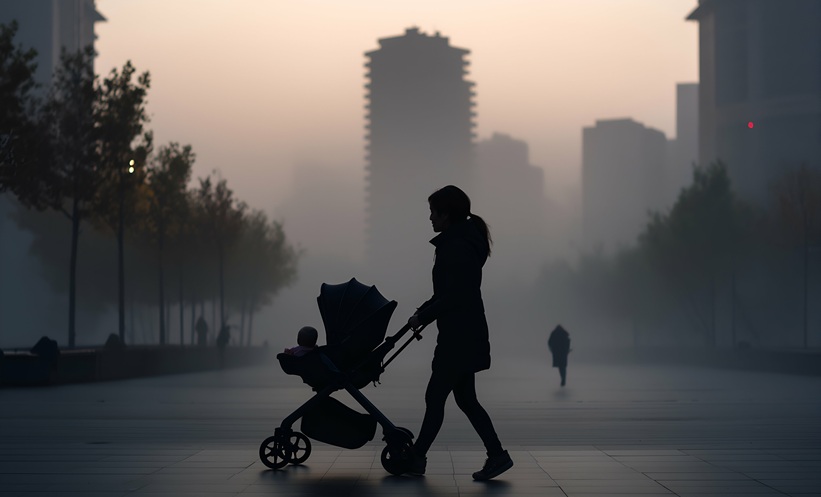Author: Helena Bradbury, EMJ, London, UK
Citation: EMJ Respir. 2024;12[1]:21-24. https://doi.org/10.33590/emjrespir/GOFX6023.
![]()
SUSCEPTIBILITY IN URBAN ADOLESCENCE
Vivi Schlünssen, Aarhus University, Denmark, opened her talk by referencing the Forsdahl-Barker hypothesis, the theory that inadequate nutrition in early life increases susceptibility to ischaemic heart disease later in life. Now expanded to the ‘Developmental Origins of Health and Disease’, this concept highlights the effects of maternal nutrition on disease risk in adulthood.
A compelling 2022 study comprising 929 offspring aged 18–54, 54% of which were daughters of 308 fathers and 388 mothers (aged 40–66), concluded that fathers’ overweight status in puberty was associated with asthma in adult offspring.1 Additionally, the impact of male smoking in puberty on offspring respiratory health has been widely documented.2
Looking to the future, Schlünssen highlighted several initiatives set out to minimise the effect of urbanisation on adolescent health. First, the societal attitude towards smoking has shifted in recent decades, as this habit is no longer glamorised. The price and unavailability of tobacco products have increased, thus deterring the general public from purchasing such products, and many cities worldwide have adopted a ‘smoke-free’ approach, banning the purchasing and possession of e-cigarettes and creating smoke-free public spaces. Communal, public spaces have also been purposely designed to promote more physical exercise.
INNOVATIVE STRATEGIES FOR THE ADVANCEMENT OF URBAN RESPIRATORY HEALTH
Alessandro Marcon, University of Alberta, Canada, then took the stage, spotlighting various innovative strategies for improving urban respiratory health and the health benefits of green spaces. Benefits are seen in cardiovascular, mental, respiratory, and metabolic health, as well as pregnancy outcomes.3
An example of this is the ‘Green Corridors’ in Medellin, Colombia, a project set up in 2016 to reduce the city’s heat island effect and improve air quality through the creation of a network of green spaces.4 Costing 16.3 million USD, 30 green corridors, including 20 km of shaded cycle and pedestrian paths, were created. Remarkably, temperatures reportedly fell by 2 °C in the first 3 years following construction.
Marcon then cited several staggering statistics from a 2023 study, namely that across 93 cities in Europe from the summer of 2015, there were 6,700 deaths attributable to urban heat islands (UHI).5 This phenomenon of UHIs occurs when a city experiences significantly warmer temperatures than rural areas in proximity. A key contributor to this is the abundance of human-made materials, such as concrete, that reflect less sunlight than vegetation, causing the neighbouring spaces to warm.
As noted by Marcon, green spaces not only combat UHIs but also remove air pollution. Interestingly, a 2019 study quantified the percentage of different air pollutant types removed by vegetation.6 For instance, restoring land cover in the USA to county-level average canopy was estimated to remove the pollutants SO2, PM10, PM2.5, and NO2 by 30%, 10%, 11%, and 14%, respectively.
But are green spaces cost-effective? “In short, yes,” explained Marcon. Displaying a graph from Gopalakrishnan et al.,6 Marcon explained that, for the majority of counties in the USA, tree restoration was more cost-effective compared to introducing the best available air pollution removal technologies. As noted by Marcon, the specific species of trees also matter. According to a recent study, it is estimated that around half of the 11,000 trees found on Royal Botanic Gardens Kew’s 320-acre London site in the UK could die by the end of 2090.7 Furthermore, a 2024 study from the University of Vienna, Austria, projected that the number of climatically suitable species per km2 in the EU will fall from 14 in 2020 to nine in 2090.8 These statistics highlight that tree restoration should take into account plant species that will be suitable for future climate scenarios.
Finally, he touched on the future potential of pollen forecasting, which will help significantly with those susceptible to pollen allergies.
URBAN INDOOR MICROBIOME AND RESISTOME EXPOSURE
Following on, Randi J. Bertelsen, University of Bergen, Norway, took the stage to raise awareness of indoor biological exposures and combative efforts to ensure a healthy indoor environment in a future with increasing urbanisation and climate change. In one particular study from Denmark, a team investigated the differences in the microbiome between suburban homes, stables, and the associated farmers’ homes, looking specifically at the bacterial transfer between the livestock and the homes.9 Results found that the bacterial load was highest in the samples from the stables and lowest in the suburban homes. Looking at the bacterial diversity and composition, they concluded that more beneficial bacteria were present in the farmers’ homes than in suburban homes and stables.
In another study, indoor airborne bacteria were collected 10 years apart (2012 and 2022) from the same 27 households for each city: Uppsala, Reykjavik, Bergen, and Aarhus (unpublished data). Using shotgun sequencing, data on the microbiome and resistome were collected. Bergen had consistently high precipitation, whilst Aarhus had the highest wind speed and temperature over the 10-year period. Overall, statistical models revealed that temperature and humidity influence the changes in microbiome composition, likely by affecting growth conditions, moisture availability, stress tolerance, and nutrient access.
Finally, Bertelsen touched on ways to secure a healthy indoor environment, such as using user-friendly, affordable ventilation systems, cleaning regularly, and opting out of certain materials (e.g., wood, carpets, textiles) as they foster the growth of allergens and microorganisms. Within the wider public, she urged for the construction of climate-resistant infrastructure, implementation of stricter air quality standards and regulations for indoor/outdoor environments, and public awareness campaigns on the importance of air quality.
CONCLUSION
Overall, these presentations from the 2024 ERS Congress collectively emphasised the significant impact of environmental and developmental factors on urban health, particularly in adolescence. They highlighted the growing concern over how urbanisation, climate change, and lifestyle choices affect long-term health outcomes, especially respiratory health. Urban planning strategies, such as the introduction of green spaces, were shown to play a crucial role in improving air quality, reducing heat, and promoting overall well-being. Additionally, the importance of addressing both outdoor and indoor environmental factors, including pollution, temperature, and microbiome composition, was stressed as key to creating healthier living spaces.






